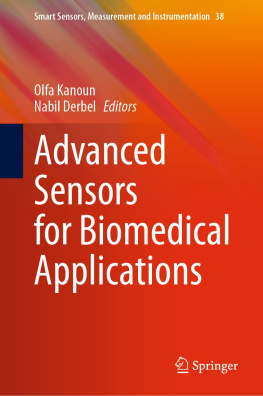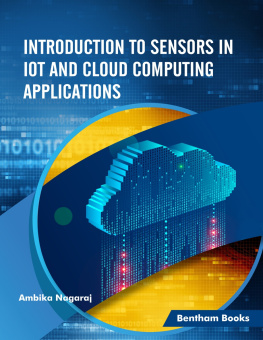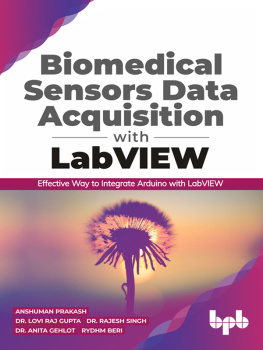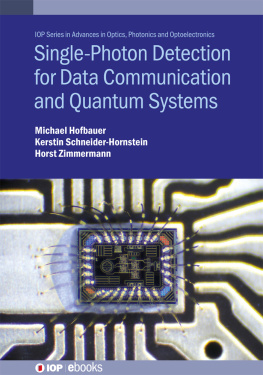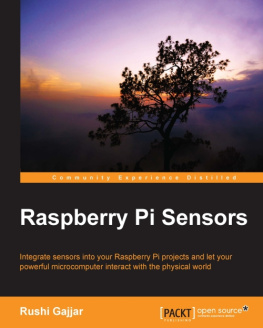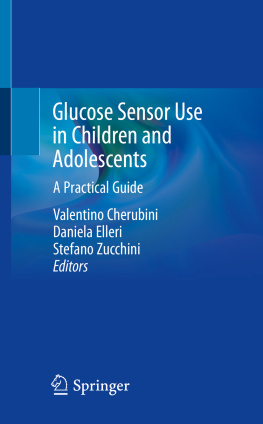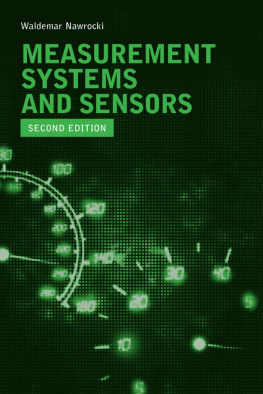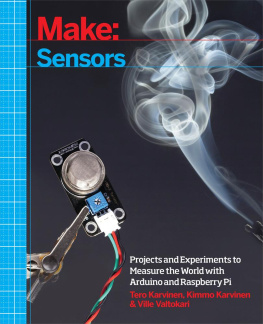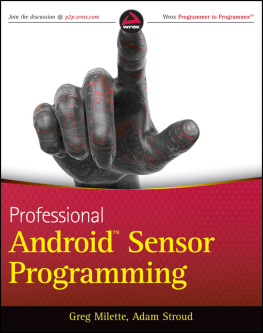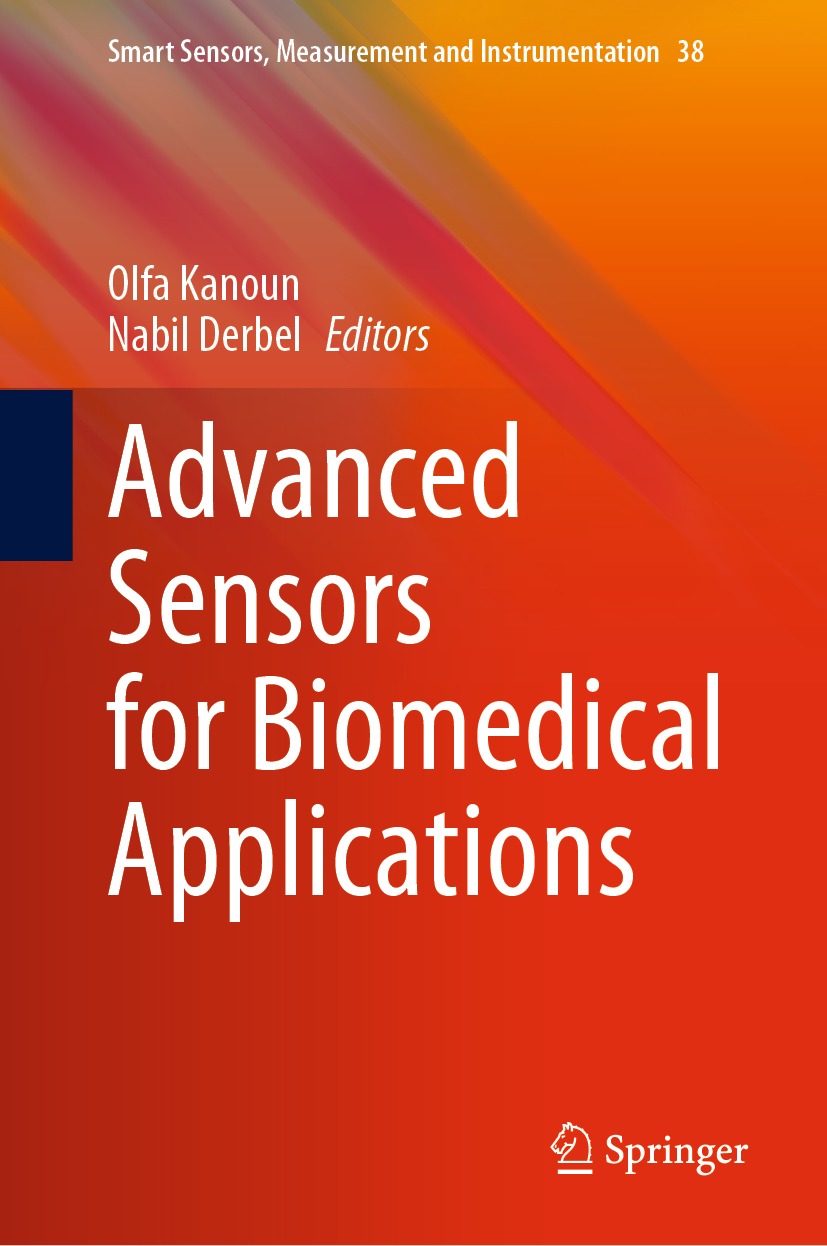Editors
Olfa Kanoun
Fakultt fr Elektrotechnik und Informationstechnik, Technische Universitt Chemnitz, Chemnitz, Germany
Nabil Derbel
Department of Electrical Engineering, Ecole Nationale dIngnieurs de Sfax, University of Sfax, Sfax, Tunisia
ISSN 2194-8402 e-ISSN 2194-8410
Smart Sensors, Measurement and Instrumentation
ISBN 978-3-030-71224-2 e-ISBN 978-3-030-71225-9
https://doi.org/10.1007/978-3-030-71225-9
The Editor(s) (if applicable) and The Author(s), under exclusive license to Springer Nature Switzerland AG 2021
This work is subject to copyright. All rights are solely and exclusively licensed by the Publisher, whether the whole or part of the material is concerned, specifically the rights of translation, reprinting, reuse of illustrations, recitation, broadcasting, reproduction on microfilms or in any other physical way, and transmission or information storage and retrieval, electronic adaptation, computer software, or by similar or dissimilar methodology now known or hereafter developed.
The use of general descriptive names, registered names, trademarks, service marks, etc. in this publication does not imply, even in the absence of a specific statement, that such names are exempt from the relevant protective laws and regulations and therefore free for general use.
The publisher, the authors and the editors are safe to assume that the advice and information in this book are believed to be true and accurate at the date of publication. Neither the publisher nor the authors or the editors give a warranty, expressed or implied, with respect to the material contained herein or for any errors or omissions that may have been made. The publisher remains neutral with regard to jurisdictional claims in published maps and institutional affiliations.
This Springer imprint is published by the registered company Springer Nature Switzerland AG
The registered company address is: Gewerbestrasse 11, 6330 Cham, Switzerland
Preface
In this book, we present recent developments in the field of biomedical sensors and systems covering a wide range of sensors, methods, systems, and instrumentation techniques for diagnosis, monitoring, treatment, and assistance. It provides insights into theory, applications, and perspectives relevant to the field of biomedical engineering, as well as the general paradigms and methodologies behind them. Each chapter provides enrichment of understanding on a research topic along with a balanced treatment of the relevant theories, methods, or applications. It reports on the latest advances achieved in the corresponding field of biomedical engineering. This book is a good reference for graduate students, researchers, educators, engineers, and scientists.
This book is dedicated to recent developments in the field of sensors and includes 10 chapters in total, structured into two parts as follows.
The first part of this book focuses on human activity analysis, and comprises five chapters:
The first chapter entitled provides a detailed state-ofthe-art survey of the human action recognition by exploiting acceleration data.
The second chapter entitled focuses on the design and implementation of thin multi-walled carbon nanotubes (CNT)/polydimethylsil-oxane (PDMS) based nanocomposite pressure sensors for the analysis of the foot pressure distribution.
The third chapter entitled is dedicated to sensors based on carbon materials, which are gaining importance due to their high flexibility, sensitivity, and medical compatibility. Specially, nanocomposite based pressure and strain sensors offer a potential tool that helps to build the basis for body-attached sensor networks.
The fourth chapter entitled presents a method for reducing energy consumption in a wireless body sensor network by data aggregation, which reduced the necessity of re-transmission of data and improves at the same time the network lifetime.
The fifth chapter entitled proposes an implementation of human movement detection algorithm on GPU based on the programming language CUDA, in order to extract the image features using the Fourier descriptor on GPU, and based on the histogram of orient gradient descriptor on GPU.
The sixth chapter entitled introduces an impedimetric breath sensor based on a graphene oxide film, deposited on a silver interdigitated electrode and a flexible substrate having a very fast and extremely high sensitivity to the relative humidity in the ambient.
The second part addresses electrochemical sensors for early screening and diagnosis of diseases as an emerging field with a special importance nowadays, and comprises four chapters:
The seventh chapter entitled reports on the development and the fabrication of gold microelectrodes based on silicon by silicon technology, for multiplex detection of cytokines, which became an important biomarker for the identification of end-stage heart failure during the early phase of left ventricular assisted device implantation.
The eighth chapter entitled provides a review about recent advances in the design of electrochemical biosensors for the quantification of urinary biomarkers of prostate cancer, which is today one of the most frequently diagnosed malignancy in man.
The ninth chapter entitled describes how MicroRNAs, giving insight into etiology and progression of several pathologies, can be detected by various biosensing technologies that have been developed recently with signal amplification using functional nanomaterials, nucleic acid circuitry, and enzymes.
The tenth chapter entitled provides a review about several detection methods, such as stool antigen tests, fluorescent detection methods, calorimetric detection methods, surface plasmon resonance detection methods, as well as electrochemical methods.

